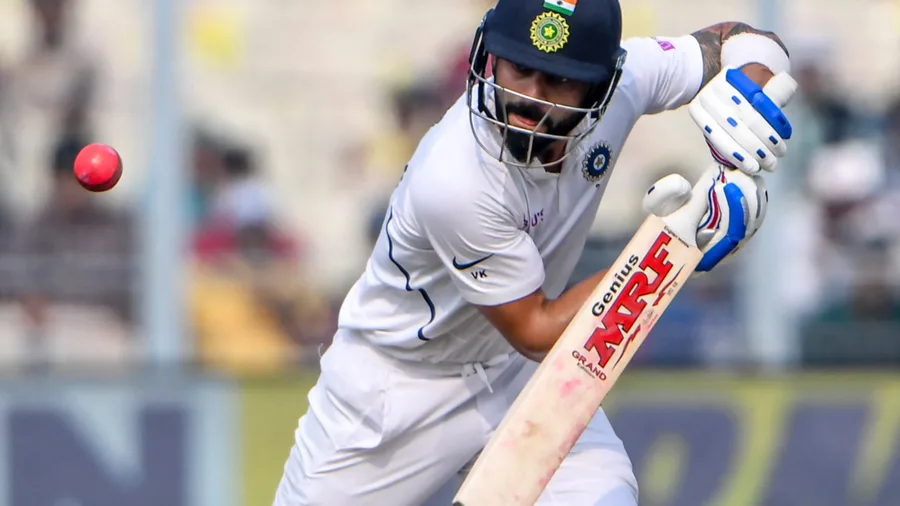Why Is the Pink Ball Used in Day/Night Test Matches?
Cricket is a sport deeply rooted in tradition, yet it continuously evolves to stay relevant in modern times. One of the most fascinating innovations in recent years is the introduction of the pink ball for day/night Test matches. But why was the pink ball chosen for these games? What makes it so unique compared to the traditional red ball? Let’s dive into the world of the pink ball, exploring its significance, origins, and impact on the game.
The Need for the Pink Ball in Day/Night Matches
The introduction of day/night Test matches was aimed at attracting a broader audience, particularly those who couldn’t follow cricket during the day due to work or other commitments. While the concept was groundbreaking, it presented a unique challenge—visibility.
Test matches traditionally use a red ball, which is well-suited for daylight conditions but becomes increasingly hard to spot under artificial lights. White balls, commonly used in limited-overs cricket, were not an option as they clash with players’ white uniforms. Enter the pink ball—a perfect balance between visibility and tradition.
Key Reasons for Choosing the Pink Ball:
- Enhanced Visibility: The bright pink hue is easier to see under floodlights, making it suitable for twilight and nighttime play.
- Durability: Unlike white balls, which lose their color quickly, pinkballs are designed to retain their brightness longer.
- Tradition Meets Modernity: It is aligns with the longer format’s heritage while adapting to modern-day needs.
When Was the Pink Ball Test Match First Played?
The inaugural day/night cricket ball Test match was a historic event in cricket. It was played between Australia and New Zealand at the Adelaide Oval from November 27 to December 1, 2015. The match marked a turning point in cricket history, showcasing the viability of Test cricket under lights.
This game didn’t just introduce the pink ball; it also highlighted the changes required in players’ techniques and strategies. Bowlers, especially pacers, observed more swing during twilight hours, while batsmen found it challenging to adjust to the ball’s movement and visibility as light conditions changed.
How Is the Pink Ball Different from the Red and White Balls?
While the pink ball might look like just another cricket ball painted differently, it has unique features designed for day/night Tests. Here’s how it stands apart:
1. Color and Coating
- Red Ball: Made with natural leather, the red ball is polished with wax, giving it a smooth finish.
- White Ball: Coated with a synthetic finish to retain its brightness.
- Pink Ball: It combines the natural leather feel of the red ball with a special UV coating to make it glow under lights.
2. Seam
The seam of the pink ball is often dyed black to improve visibility against the pitch and under artificial lights. This is different from the white and red balls, which use white and red seams, respectively.
3. Swing and Bounce
The pink ball swings more than the red ball, especially during twilight. Bowlers can exploit these conditions to trouble batsmen, making day/night Tests particularly exciting.
4. Durability
Pink balls are slightly harder than red balls, enabling them to withstand extended play under lights without losing shape or color.
Challenges of Using the Pink Ball
While the pink ball has its advantages, it hasn’t been without its challenges. Here are some of the issues players and manufacturers have faced:
- Visibility for Fielders: While the day/night cricket ball is easier for batsmen to see, fielders sometimes struggle to spot it against certain backgrounds.
- Wear and Tear: The pink ball tends to lose its shine faster than the red ball, affecting its behavior after a few overs.
- Twilight Factor: The transition period between daylight and artificial lighting creates challenging conditions for both batsmen and bowlers, often leading to unpredictable gameplay.
Despite these hurdles, continuous improvements in ball manufacturing have made the pink ball more reliable and suited for day/night Tests.
Memorable day/night cricket ball Matches
Since its debut, the pink ball has been used in several iconic matches, adding excitement and drama to the game. Some notable ones include:
India vs. Bangladesh, Eden Gardens, 2019
- India played its first day/night Test at Eden Gardens, dominating the game with a resounding victory.
Australia vs. Pakistan, Adelaide Oval, 2019
- David Warner scored an unbeaten 335, showcasing how batsmen can adapt to the day/night cricket ball.
England vs. West Indies, Edgbaston, 2017
- England’s first day/night cricket ball Test witnessed spectacular performances, solidifying the format’s appeal.
The Future of Pink Ball Cricket
As cricket evolves, the day/night cricket ball has become a symbol of innovation within the sport. Day/night Test matches are gaining popularity, especially in regions where viewer engagement with traditional daytime Tests has declined. With ongoing refinements, the day/night cricket ball is likely to become a staple in Test cricket, offering a fresh perspective to players and fans alike.
The International Cricket Council (ICC) and cricket boards worldwide continue to back day/night Tests as a way to revive interest in the longest format. This innovation not only preserves the tradition of Test cricket but also ensures it remains relevant in a fast-paced world.
The pink ball is more than just a cricketing innovation; it represents the sport’s ability to adapt and thrive. By addressing the challenges of playing under lights, it has opened up new possibilities for Test cricket, making the format more inclusive and accessible.
As fans, players, and experts continue to embrace the day/night cricket ball, it’s clear that it has carved a permanent place in cricket’s history. Whether you’re a purist or a modern enthusiast, there’s no denying that the day/night cricket ball has revolutionized the game, adding a vibrant twist to the timeless beauty of Test cricket.

Your article helped me a lot, is there any more related content? Thanks!
I don’t think the title of your article matches the content lol. Just kidding, mainly because I had some doubts after reading the article.